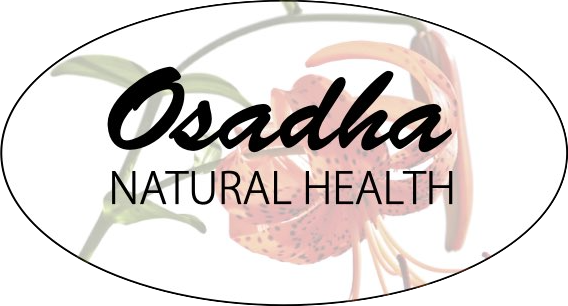Dogs (and cats!) can have dental problems just like people do. Our domesticated companions may not have access to the many chewy things in nature that help maintain healthy choppers. Indeed, studies have shown that consistent dental care is important to prevent tooth decay and gum disease in our canine companions (a). The same is true for cats (good luck brushing their teeth, though…).
What to do to support the health of your pooch’s periodontal health?
1) Be sure that your four legged friend has crunchy things to eat.
Dogs and cats need tough things to bite through and chew to keep teeth and gums healthy. Both teeth and gums will deteriorate if your pet is limited to a diet of soft food, even if it is good quality, home made food. Be sure to add some crunch to your friend’s life: Bones to gnaw on (no poultry bones!), carrots to nibble (they may support healthy tooth enamel (b)), good quality commercial dental chews or a crunchy, healthy low calorie treats. Dental chews have been shown in dogs to reduce plaque formation and, with regular use, may help prevent gum disease (c, d).
2) Brushing!
Yes, dogs may benefit from having their teeth brushed. Regular brushing of your dog’s grill may improve the healing of gum disease in part by stimulating gum regrowth (e).
A Google search for “dog toothpaste” turned up over 10 million hits, so I’d say that this is a pretty hot topic! There are a number of commercial doggy toothpastes on the market. If going this route, try to find one that is as natural as possible (avoid those with artificial colors, for instance). Remember that your dog doesn’t necessarily like the same toothpaste flavors that we people do. Think liver, not wintergreen. And, absolutely do not use people toothpaste. Toothpaste for people is not appropriate for a number of reasons, not the least of which are ingredients that are toxic to dogs. Stick with a dog-specific toothpaste or, if feeling adventurous, make your own.
Homemade pooch pastes often contain baking soda or food grade clay (eg. calcium montmorillonite clay), an oil such as coconut or olive, and water. These are mixed to form a relatively thick paste that can be applied with a dog-specific toothbrush, a cotton ball or piece of cloth. Even your finger will suffice. Optional pooch paste additions could include organic broth or bouillon for flavor, or supportive herbs (see next section).
Start slowly and get your dog used to the idea of brushing. Be gentle when brushing, but don’t dawdle and try your dog’s patience. Always reward her with a crunchy treat afterwards. Consistency is key, however. Brushing needs to occur frequently in order to be beneficial. One study found that either daily brushing or brushing every other day with daily dental chews was necessary to improve tooth and gum health (f).
3) Botanical support
There are a number of herbs traditionally used for periodontal health, including in mutts. Fennel is a top one for reducing doggy breath. It, along with herbs like Sage, Dill and Parsley, does this through anti-microbial effects in the mouth as well as by improving digestion. Other great supportive herbs include Cinnamon, Myrrh and Alfalfa. Some, like Cinnamon, also bring in fresh blood for nourishing the gums. Any of these herbs can be used in home-baked crunchy biscuits, or added to meals in powder form.
For herb amounts that are safe for use in dogs, there are great resources such as “All you ever wanted to know about herbs for pets” (Tilford and Wulff-Tilford), “Dr. Kidd’s guide to herbal dog care” (Kidd), and “Dr. Pitc
airn’s complete guide to natural health for dogs and cats” (Pitcairn and Pitcairn).
A final note…..
Don’t forget that the inside-out approach is also important for oral health. This means supplementing with mineral and vitamin rich foods and/or herbs such as a pinch of seaweed, some alfalfa or powdered oatstraw. Vitamin C may be helpful for immune health to help prevent dental infections from starting in the first place. Again, for more specific guidance on supplementing your dog’s diet, see one of the books I mentioned above, and happy brushing!
References
b) de Bairacli Levy, J (1992) The Complete Herbal Handbook for the Dog and Cat. Faber and Faber Limited, Bloomsbury House, London.
a) Buckley, C, et al (2011) The impact of home-prepared diets and home oral hygiene on oral health in cats and dogs. Br J Nutr. 106 Suppl 1:S124-7.
c) Hennet, P (2001) Effectiveness of an enzymatic rawhide dental chew to reduce plaque in beagle dogs. J Vet Dent. 18(2):61-4.
d) Hennet, P, et al (2006) Effectiveness of an oral hygiene chew to reduce dental deposits in small breed dogs. J Vet Dent. 23(1):6-12.
e) Tomufuji, T, et al (2007) Location of proliferating gingival cells following toothbrushing stimulation. Oral Dis. 13(1):77-81.
f) Gorrel, C and JM Rawlings (1996) The role of tooth-brushing and diet in the maintenance of periodontal health in dogs. J Vet Dent.13(4):139-43.
~~~
Content © Dr. Anna Marija Helt, Osadha Natural Health, LLC. Permission to republish any of the articles or videos in full or in part online or in print must be granted by the author in writing.
The articles and videos on this website for educational purposes only & have not been evaluated by the Food and Drug Administration. This information is not intended to diagnose, treat, cure, or prevent any disease or to substitute for advice from a licensed healthcare provider.

